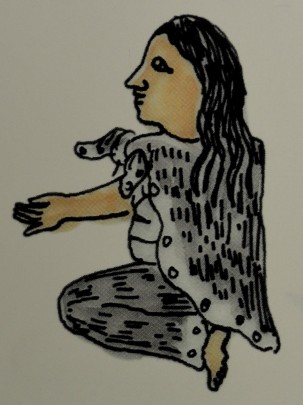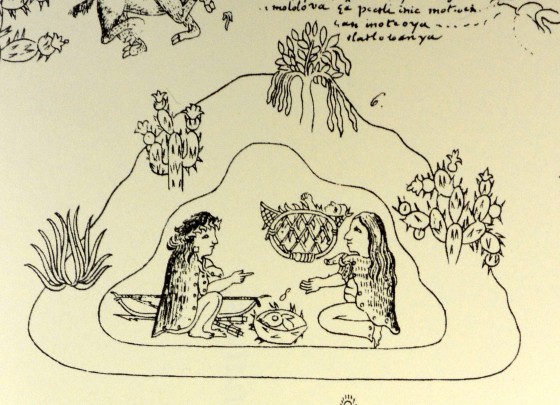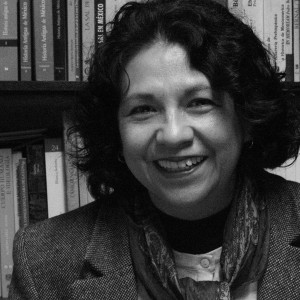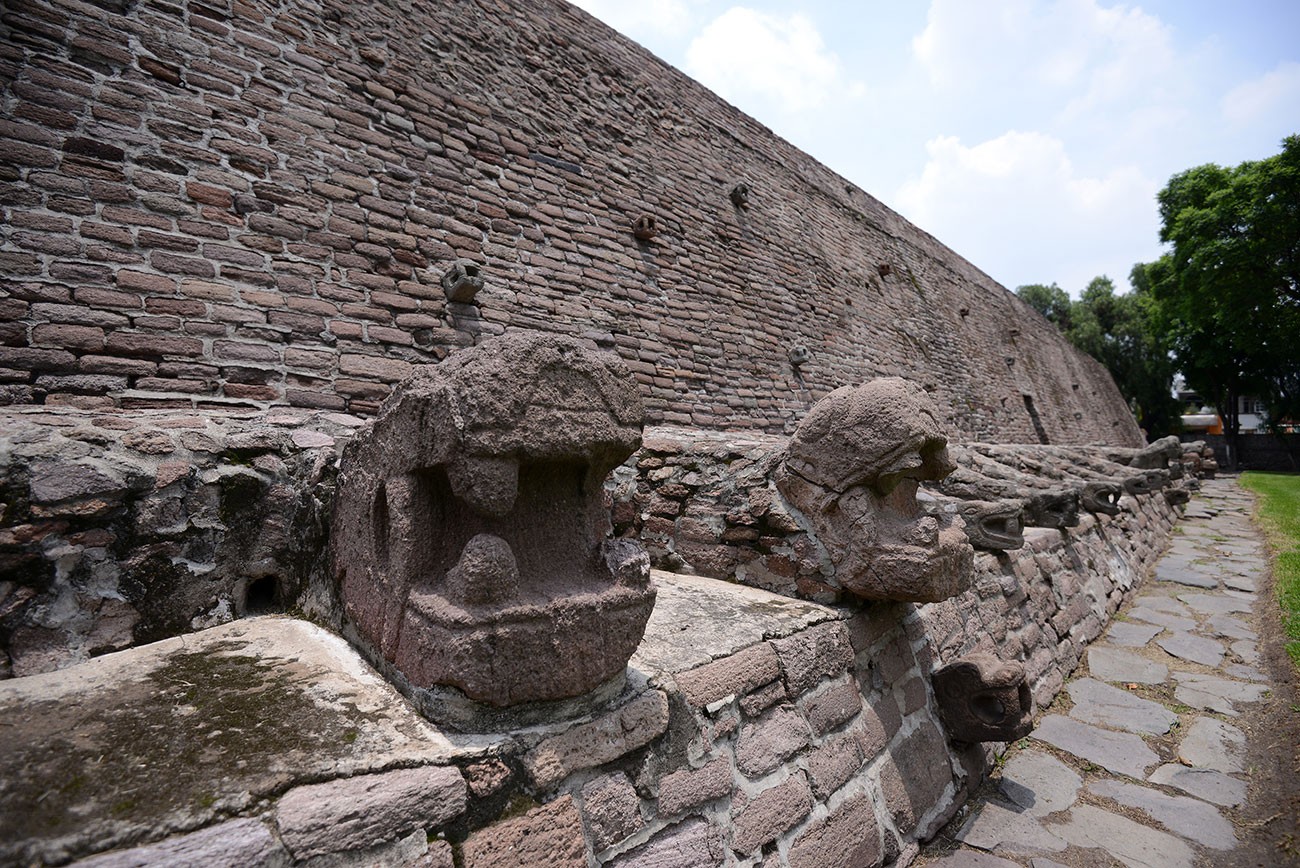Tenayuca is closely linked to the Chichimecs, since according to historical sources Xolotl, the founder of Tenayuca, arrived at the site at the head of one of the Chichimec groups.
The name Chichimec is applied generally to the groups of migrants from the north who arrived in the Mexico basin in the twelfth century. They are identified as semi-nomads accustomed to desert environments. Some of the codices indicate that they lived in caves and subsisted by gathering plants: principally mesquite, biznaga, prickly pear and its fruit and other cactuses, which they supplemented with animal meat from hunting. Hunting was a highly valued skill among Chichimec males, who are represented carrying wooden bows strung with fiber and an animal skin quiver over the shoulder to carry arrows decorated with feathers. Hunting provided food as well as skins, which were cut for use as clothing. The men wore capes and the women wore skirts and capes.
Historical eye-witness accounts record many waves of Chichimec arrivals in the valley of Mexico from the twelfth century, but politically these were dominated by the group of Chichimecs who arrived under the command of Xolotl. The Xolotl Codex to which he gave his name notes that according to cultural tradition, upon arrival the Chichimecs established themselves in caves which included the Cerro del Tenayo, also known as Oztopolco, literally the place of many caves. The Codex tells that this hill looked over the settlements on the shores of the Texcoco lakes. Unlike the Chichimecs, these shore dwellers were sedentary and lived from farming. They cultivated corn, beans, pumpkins and chili, enriching their diet and economy with produce from the lakes and rivers. However while these settlements ensured subsistence, the social and political environment was unstable as a result of migration and the rise of new settlements which arose after Tula was abandoned.
These unstable conditions favored political transformation pushed by Xolotl and his descendants, and led to them being lauded as the new lords of the Valley of Mexico. Nevertheless, the Chichimecs are presented as an inferior cultural group, whose social organization was undoubtedly complex, with a tradition of institutional hierarchy, which enabled them to take control of the central Highlands in a short period of time. They underwent a cultural transformation, and part of their strategy was through marriage alliances between Chichimec lords and Toltec women. Their new way of living emphasized agriculture, gradually drawing away from hunting, and their native language which came from Otomi was displaced by Nahuatl; they also changed their appearance by replacing their skin garments with cotton clothes.
At the same time as these cultural modifications, they extended their domain beyond the Mexico basin, by imposing tributes through war and alliances to form the Chichimecatlalli, a political entity which literally means the Chichimec territory. To sum up, this group of Chichimec origin established a new dynastic government traced back to Xolotl, dividing the territory among their families and Chichimec migrants who continued to arrive in the central valleys.
According to historical tradition, Tenayuca was founded as the capital of the Chichimecatlalli at the height of its splendor. However the political center was gradually displaced until Quinatzin, the fourth descendant of Xolotl finally moved to Texcoco in the year 1350. From then onwards Tenayuca was politically sidelined, but it is preserved as the historical city of the descendants of Xolotl.









